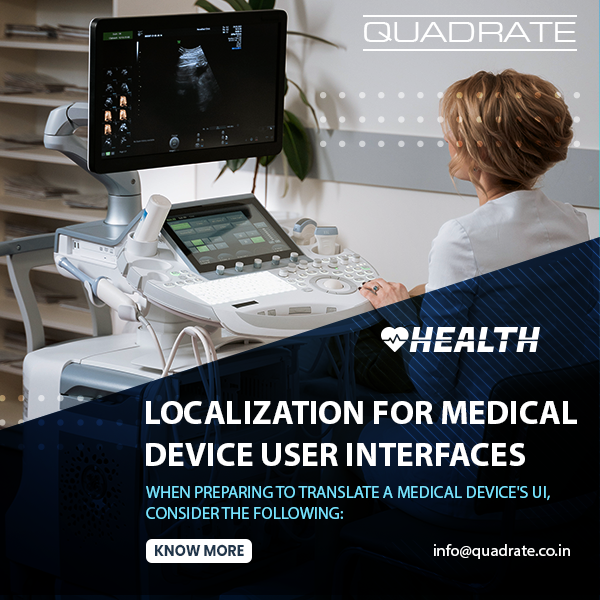Whether your end-users utilize your medical device in a hospital setting, a private healthcare clinic, or their home, if you plan on marketing a medical device in foreign countries, you will be required to localize the UI into other languages. Translating the user interface of a medical device is significantly more challenging than other translation services such as manuals. The reason for this is that device user interfaces contain terminology and abbreviations specific to the industry as well as possibly lengthy or technical texts. Without sufficient knowledge of the field, localizing those phrases accurately could be difficult and some translations might not convey their intended meaning within those fields. This could be problematic for several reasons: firstly, it may lead prospective end-users not to use your product (even if they need it), and secondly, because your product may prove unsafe if translated inaccurately!
When preparing to translate a medical device’s UI, consider the following:
- Ask your UI integration team or programmers which file format they are using to integrate the user interface. Some of the most common formats include RC, XML, and XLS files.
- Make sure your translation service provider and their translators have a solid understanding of your medical device as well as the purpose and functionality that comes with it.
- You need to ensure that your translator is well acquainted with the context of the project and that they know what all the strings mean and what they are meant to accomplish in relation to how your client will interact with your product.
- When considering UI translation, keep in mind that some languages may be more verbose than others (for example, the amount of translated text is larger) and there may be size limits on various screen elements. This problem can arise when the original device UI has been already coded and approved by medical departments. Make sure your developers and programmers comprehend these needs and limitations at the get-go.
- Once you have the completed localized string data, confirm with the translators that they understood the context correctly by demonstrating the translated text onscreen. You can also use these images later in your translated instruction manuals to save time and money.
When regulators in other countries require a medical device to be translated, it is a step towards having a finished package that can be used regardless of what country to which it’s being transported or marketed. This procedure will ensure that regardless of which side of the ocean it’s being distributed to, your user interface will remain consistent and give your prospective clients peace of mind knowing that they will have no problems operating any aspect of your product regardless of who their doctor or healthcare provider might be.
Quadrate knows that when it comes to device user interfaces, the most important thing is that they remain easy and reliable for people to use. We not only offer medical device UI translation services, but our team also specializes in helping validate your software which entails testing its functionality before commercialization. Whether you require expert medical or technical software translation services or UI translation or simply need reliable validation, we’re the company for the job.

